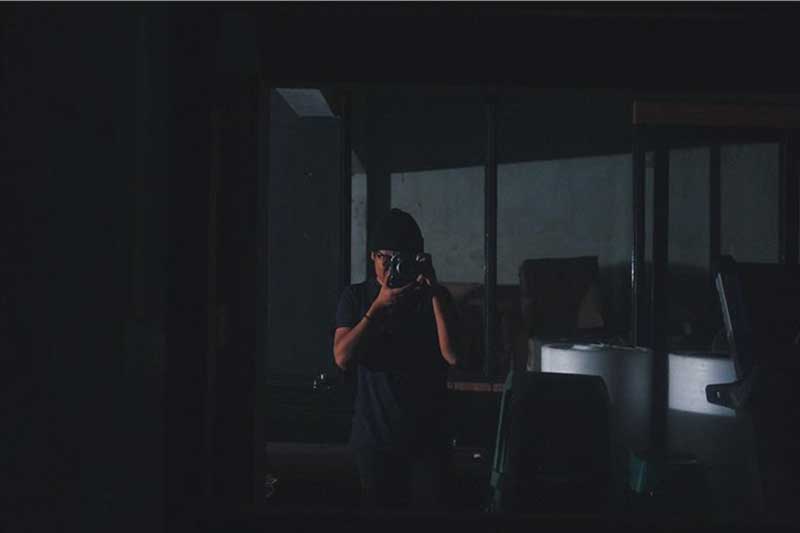Presence, Agility, and Perseverance
An Interview with Dhito Satrya – Alumni XLFL Batch 2
Founder, Owner, and Managing Director of NAMA Studios
I’ve always thought that I was the first Prasmulyan to ever enter XL Future Leaders, until I met Satrya. Satrya was my senior on campus and although we’re 6 years apart, and that I never met him in person, his brand NAMA Studios has left a great impression on us as students and his juniors. Having known NAMA Studios before the owner himself, I have always been impressed by their overall strategy as a business. Starting from how they manage their orders, to maximizing the power of storytelling to help resonate the brand with its audience.
The condition we’ve been facing has changed a lot of aspects in our life. It has affected our way of doing things, including our way of doing business. During my virtual late-night interview with Satrya, we’re digging deep into his take, as a business owner, in handling all these changes and uncertainties, while shaping and maintaining an agile mindset.
Dhito Satrya
“I was majoring in business back in the days, but I’ve always had the passion for marketing and operations.â€
Satrya is the founder and owner, and currently the managing director of NAMA Studios. He established NAMA Studios in 2015 and the brand has been going strong since then. As a managing director, he was once responsible for every single function working to support his business, from crunching numbers to managing talents. However, entering a new phase where he gets to share his load of work on finance and human resources to his team members, he now gets to channel his passion for marketing and operations.
“Be honest to your customers†is a phrase that could probably sum up his strategy when it comes to marketing. Apart from all the selling strategies he’s applying, Satrya reckons that having a strong belief in the brand that we’re building and being honest to the customers are keys to winning the competition. “There are lots of imposter brands out there, yet the emotional attachment (that our customers have shown) to ours, is something undeniableâ€. Satrya is fully aware that customers do want to see the end result (the products), which makes perfect sense. But out of all the things he said, this caught my attention the most. “They also wanted to know your journey …â€. This brought me to a realization as to how important your story is as a brand. But the question remains, what story do you have to tell to your audience?
Satrya told me that the key to great storytelling is to be honest to your audience. Tell them your struggle, your triumphs, and whenever you fall short due to a certain condition. Let them know. Although we often see that business is mostly transactional, when you add up a little touch of honesty, packaged in delicate words, it changes the whole concept to relational. It creates this sense of relationship and ownership of the brand that comes, not only from the team, but also from the customers. Satrya added that the responses given by the customers were beyond his expectations. He could see how bonded their customers are to the brand, hence why he thinks storytelling is a great investment.
Agility in the New Normal
“I remember that there’s this other case that I had to handle even before corona, so I decided to let everyone return to their hometown in advance … we’re actually facing more challenges now, during the recovery phaseâ€
When we talk about the term “agility†and “agileâ€, I believe that we’re all now familiar with this term compared to when it was first coined. All companies are using the term “agile†whenever they’re trying to describe all the fast-paced changes happening within the organization. But for Satrya, “agile†is more than just doing it all pronto, it talks about how to create an environment that enables everyone to crawl, walk, and run at the exact same pace. He saw the situation we’re facing now in a new light, that people are even more grateful for the job they’re holding accountable for and personally finding more ways to increase their productivity. For Satrya and NAMA Studios, they’re now moving in full speed in almost all aspects of their business. But one of the shifts that he highlighted the most was how the situation has changed their way of communicating as a team. They’re getting even more used to virtual meetings and long-distance communication, which requires even more attention.
Having to deal with everything virtually and online, I would personally say that it’s not easy. Even my family and my friends are still struggling with it. So I got curious as to how Satrya managed to help the team to get used to this so-called new normal. His answer took me by surprise. I expected his answer to be filled with things other leaders would do, from managing their teams’ schedule, to keeping a tight communication and deadline on work, but I was wrong. What Satrya did was the complete opposite.
“I invested my time and effort on heart-to-heart communication. I often ask them about their family. In a situation where there are lots of uncertainties and doubts, this method has helped me and my team to be more opened up to one another. And when those emotional needs are fulfilled, it would be much easier for me to communicate about other things, especially about work … being firm and honest is important, but being emotionally invested to your family (the team) creates that sense of security.â€
“… being emotionally invested in your family creates that sense of securityâ€. I personally thought that this was the most powerful take-out from my interview. I asked Satrya on what are the actions we should take as a leader when managing a team in such tough times. He summed up his approach in three words; presence, agile, and perseverance.
- First is presence. It means being there physically and emotionally. When having to deal with virtual meetings, we might not be there physically, but we should always be mindful of what’s really happening within the meeting by being emotionally present and invested.
- Second is being agile. When it comes to making decisions, being agile comes in handy. Make sure that your decisions are based on data and facts. Not only does your decision matter, but how you bring your team to embark on that vision matters as well. Make sure to hold them accountable. Give them the tasks that you know they have the capability to handle, but increase them gradually to build trust upon themselves.
- Lastly, persevere in your vision
Starting your own Journey
When you see this situation in a new light, you might notice that by staying at home, it might give you more time to actually do what you want to do, and getting all those ideas out of your head and making it happen. Scrolling through my Instagram, I noticed that some of my friends might have embarked on their journey on building their own businesses, yet some of them are not sure on what’s the right step to take. Here’s what Satrya learnt when he first started NAMA;
- Be optimistic
“You will always have 1001 ways to be pessimistic and to have less faith on your vision, but whoever believes in their ideas and is willing to take a step forward, are the ones that’ll thrive.†- Focus on your goal
When it comes to your ideas, be fully immersed and committed to it. Make sure that you set a clear plan on how to achieve those goals. Don’t ever lose sight of the things you’ve sought, don’t be half-hearted on your vision, so you could have a clear strategy to direct your team.
Those messages have definitely reminded me of what to do during these tough times, better yet to be more focused on my goals and the business I’m willing to start and commit to. So, are you ready to embark on your entrepreneurship journey?
Written by Veda Renata – XLFL Batch 7

